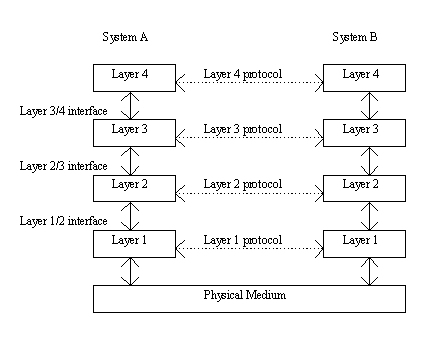
 C o m p u t e r N e t w o r k s
C o m p u t e r N e t w o r k s
 Network Basics
Network Basics
![[Previous Page]](../graphic/previcoe.gif)
![[List of Terms Page]](../graphic/termicoe.gif)
![[Table of Content Page]](../graphic/conticoe.gif)
![[List of Products Page]](../graphic/prodicoe.gif)
![[Next Page]](../graphic/nexticoe.gif)
Standards play a significant role in the field of computer networks. Special-purpose development of communications hard- and software must be avoided because of its high costs and the need to interconnect devices from various vendors. Therefore some kind of international conventions are needed, which computer vendors can follow. They allow any computer following one of these standards to communicate with another computer following the same standard.
Standards are designed in a highly formal, structured way. To reduce complexity most networks are organized as a pile of layers or levels. The purpose of each layer is to offer certain services to higher layers, which these higher layers can use without knowing how they are implemented (they simply know what is called the interface). Thus, a layer n (service provider) offers a layer n+1 (service user) services, which are composed out of functionality the layers 1 to n provide. Only the same layers of two computers communicate through a so called protocol, which is a set of rules for communication at one layer. Of course, in reality no information is directly transfered between layers; the actual communication happens through a physical medium. A set of layers and protocols is called the network architecture.
Some of the main design issues of computer networking occur in several or all layers, for example
Some organizations and companies have developed relevant standards, e. g.
OSI from the International Standards Organization and
TCP/IP, which has its origin in the ARPANET of the
U.S. Department of Defense.
![[Audio]](../graphic/audio.gif)
Additional information on
various
standards ![[WWW]](../graphic/www.gif) is available.
is available.